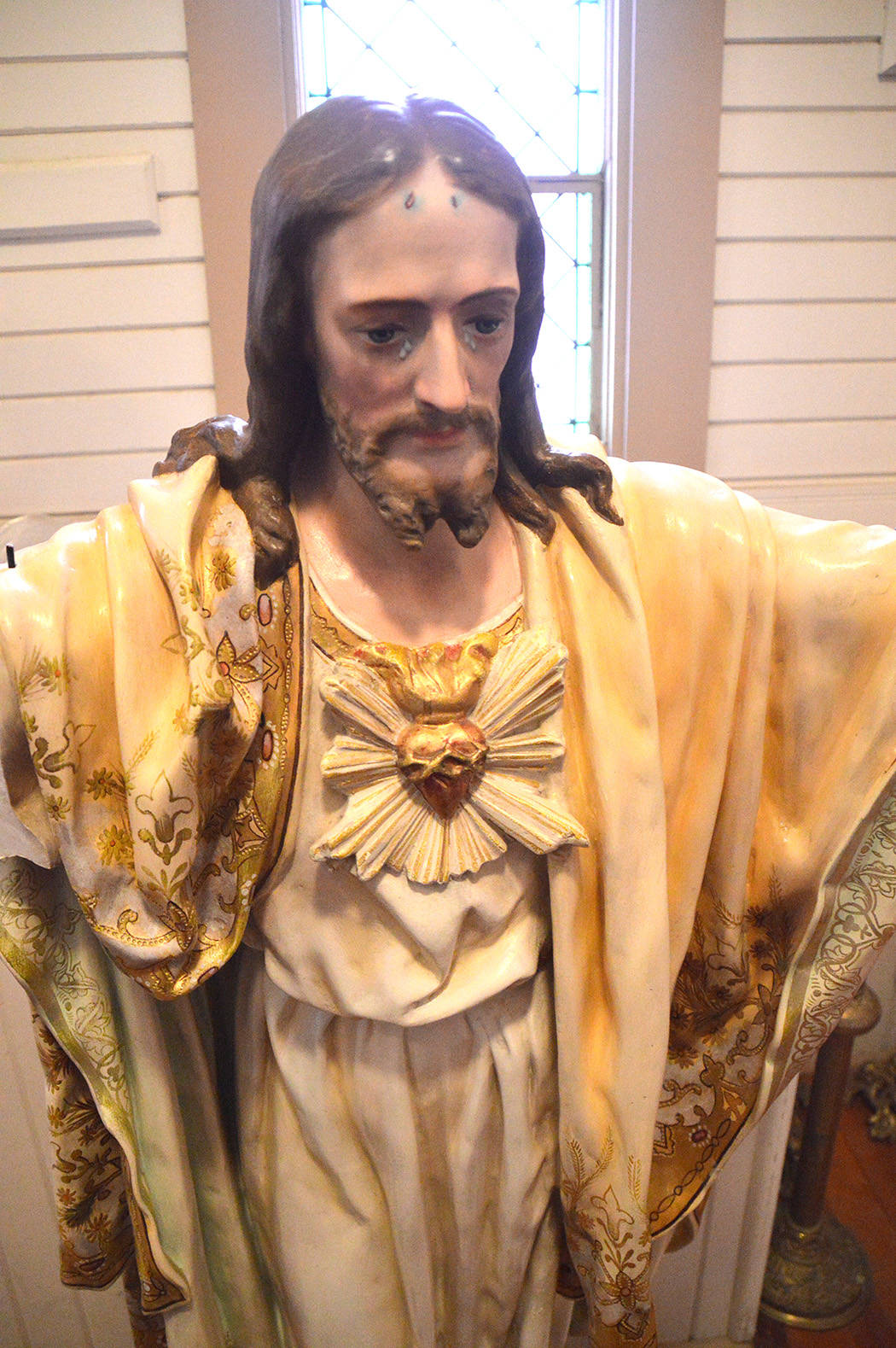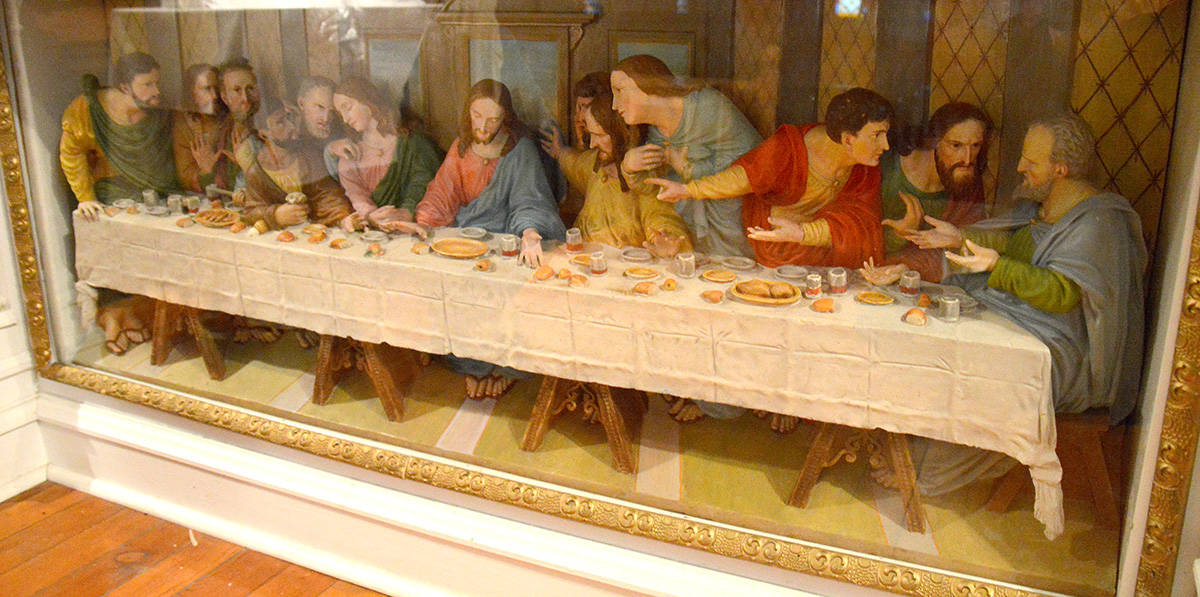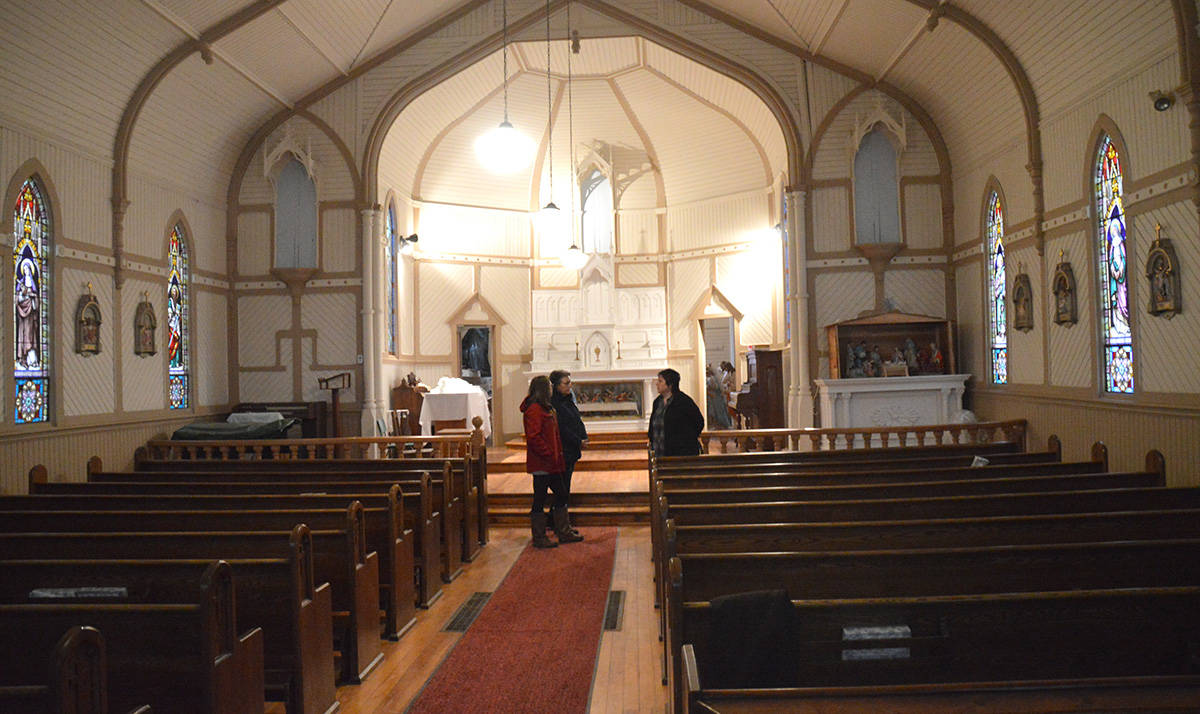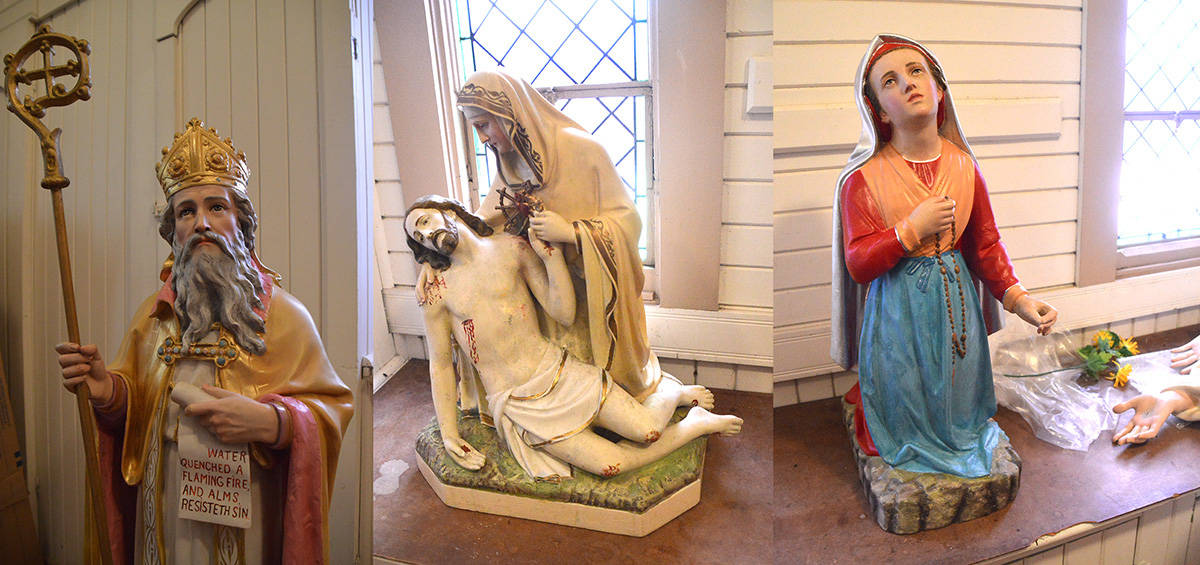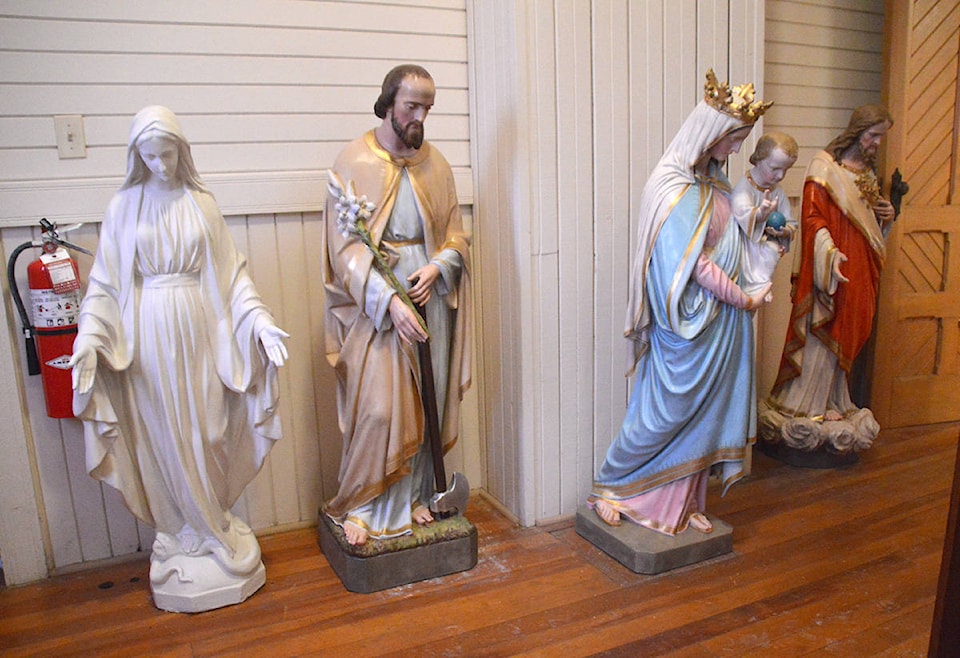The rejuvenation of an architectural gem of the East Kootenay continues, with the completion of the latest conservation project to restore the statues of the St. Eugene Church on the Aq’am Reserve near Cranbrook as a building of great historic and artistic significance.
The restoration of the church’s statuary — luminous examples of religious art, the likes of which are found the churches in Europe — took place over a three-week period between October 19 and November 8.
The St. Eugene Church is one of the few remaining wooden churches from the Victorian era in B.C., opening in 1897 and operating as a church since then, with the exception of a several years in the early 2000s, when the foundation was being refurbished. Attention has since turned to the artwork created along with the church.
The stained glass, for example, as old as the church, is as luminous and intricate as any to be found in the big cathedrals.
“I’ve had the privilege to go to Rome, and our stained glass measures up to any in [St. Peter’s Basilica],” said Sophie Pierre, who took the Townsman on an artistic tour of the St. Eugene Church last week.
In the interstices between the stained glass windows are relief depictions of the 12 Stations of the Cross, created by T. Cardi, the Quebec branch of an Italian company that created religious art for churches in the late 19th century. The names of the artists themselves are unknown, but their work in the Stations of the Cross have stood the test of time, only requiring a little cleaning.
The statuary, however, needed more, detailed restoration work. Over the decades, the large, ornate colourfully painted pieces of sculpture, had suffered chips, small breakages in the detail work, flaking and fading paint, and other attritions of time.
“[T. Cardi’s] artwork is well-known in Quebec,” Pierre said. “And we’re learning more about it as we go. When we started refurbishing, and started taking stock of what we have, we realized what an artistic treasure the church is, as well as an architectural gem.”
Some 25 figures, dating from the church’s founding, were cleaned and repaired by Andrew Todd Conservators, a company out of Vancouver. Pieces include Mary, Jesus, several saints (including St. Eugene), a nativity creche, and a striking relief, five feet long and more than a foot deep, of the Last Supper (based on the painting by Leonardo Da Vinci). This last piece is behind glass, behind the altar.
Alicia Phillips, who headed up the project with direction from Michelle Shortridge, said the conservators (Andrew Todd and Nicola Murray) had a big job to fix and clean the statures, for the first time in 125 years.
“This was work created in the highest traditions of European art,” Phillips said. “Though it took three weeks to do the work, the project was four years in the making.”
The conservators came and lived at the hotel at the resort while they did the work. And some of the restoration they was of remarkable detail. They removed some of the last flakes of paint from a statue of St. Bernadette, for example, matched the color to new paint, and repainted the statue with the exact hues of the original.
Some big jobs remain, not least the hoisting of four big statues to their places on pedestals high on the walls, including the Sacred Heart of Jesus to the place of prominence on the back wall above the altar, facing the entrance. The vintage floor is too delicate to bring in scaffolding or a crane, so there is likely to be some physical straining involved. Stay tuned for details.
Pierre said there are also plans to restore an organ for the choir loft. The original organ had been damaged beyond repair, but a couple of vintage organs have been donated to the Band for use in the church.
“A whole lot of people in the region are going to be happy,” when the restoration is finished, Pierre said.
The church is unique in the province and the region. Although the Columbia Lake and Lower Kootenay bands have heritage churches as well, they are smaller and less ornate. The founding of the St. Eugene Church coincided with the discovery and development of the St. Eugene Mine at Moyie, no longer extant, which ended up being a sister mine to Kimberley’s Sullivan Mine. Father Nicolas Coccola, a missionary working among the Ktunaxa, registered a claim on behalf of the Ktunaxa, along with a Kootenai man named Pierre Pielle and a developer named Joseph Cronin, in the vicinity of Moyie Lake. Coccola and Pielle later sold their claims, and Coccola put the profits towards the building of the church, as well as the building of the hospital.
The hospital is gone, but the church still stands one of the original buildings in the Kootenay region, a working church and a heritage treasure.
